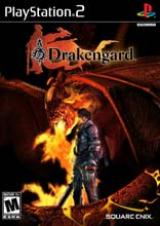A Drakengarded Response
The usually Teen-friendly Square Enix offering up a gore-filled fracas featuring the deaths of thousands of enemies? The usually creative Square Enix releasing a game that steals the main game elements from both the Dynasty Warriors and Panzer Dragoon series and offers up little new or ingenious? The usually on-the-ball Square Enix marketing department describing a game with almost no role-playing elements as an "RPG" in its official literature? What the heck's going on?
When a group of ex-Namco developers decide to create an epic adventure title, come under the not-inconsiderable marketing might of Square Enix, get reined in during the project for creating game content that was deemed too objectionable by even Japanese standards, and finally deliver a massively ponderous hack-and-slash-and-fly-and-napalm piece of software with the ironic title, Drag-on Dragoon (as the game was known in Japan), you know you've got a title to at least check out.
Kudos to Square/Enix for tweaking the U.S. game name. Thumbs up for keeping the character design of the main heroes of the game within the Square archetype -- and by that we mean all the male characters look like Leonardo Dicaprio, overly long weaponry is wielded by impossibly limp-wristed antagonists, and foppish metrosexual hair bounces up and down from the manes of the main players in all the beautifully rendered cutscenes. But in a departure for those craving the usual random monster fights, teen angst, and bizarre floating worlds, the plot of Drakengard gallops straight out of a more traditional high-fantasy yarn, and the action is in real-time, and far less subtle. Square Enix wants to subliminally pound its company name into your heads by (what else?) judicious use of the Square button.
Caim and Able
This season's smooth-cheeked hero is Caim (actually rhymes with "time"), who's a right miserable sod. He's a soldier wrapped in bloodlust, constant angst, and the hatred of the dragons who murdered his parents. He's thrust into a heroic role after the appallingly evil "Empire" decides to attack a fortress in search of a goddess, and must defeat thousands of the empire's cloned soldiers in order to rescue ... stop me if you're George Lucas and you've heard this one before. Hackneyed setup aside, the title thrusts you into the first of its three main gameplay types from the very beginning -- and it's the one that feels the most well-rounded; jogging around battlefields and cutting up chumps with a gargantuan weapon.
One button lets you pound out slicing attacks. Another launches a magical attack (try it during a combo to finish your technique in a more spectacular fashion; sending enemies sprawling in all directions under a hail of fireballs, or launching a chunk of rock skywards to skewer and maim). A third lets you jump (a technique rarely used), while the shoulder buttons block, roll in each direction, and tangle with the lamentably sluggish camera control. You've got pretty much all the maneuvering you'll ever need for the entire game's on-foot carnage sections.
To call this gameplay style "shallow" is like referring to Carrot Top as "unfunny"; it's quite an understatement. You start by slaughtering groups of around ten soldiers clustered in a platoon, letting the smoothly animated sword-play play out, tapping a constant stream of combos that allows health orbs to appear, granting you energy you lost in the previous fight when your concentration begins to wander due to the mind-numbing nature of the action.




 Average
Average



